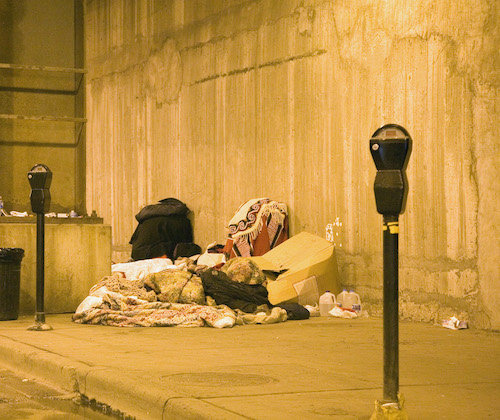California State Bill 1006, authored by East County’s District 38 Senator Brian Jones, to assist local law enforcement agencies with homeless assessment teams was approved March 15 by the Senate Public Safety Committee in a first step toward state legislature. SB 1006 would provide local law enforcement agencies with grants to utilize homeless assessment teams through a California Department of Justice competitive grant program. Under that program, local law enforcement agencies could apply for funding to use with local homeless assessment teams screening individuals for wraparound services.
According to the March 22 version of SB 1006, those teams would include, at a minimum, a mental health professional, a medical services professional, a representative of the county welfare department and may, but are not required to include a member of law enforcement. The grant would authorize the mental health and medical services team members to be volunteers associated with a nonprofit or be graduate students in the appropriate field of study.
Under the bill, the Senate Budget and Fiscal Review Committee is asked to designate $150 million in the 2022-23 state budget to fund the program.
“This is a comprehensive team approach to provide on-the-spot assessments of the needs of homeless individuals along with immediate placements in necessary health programs and appropriate housing facilities,” Jones said.
The measure, Jones said, is similar to SB 1203, which did not come up for a hearing and was never voted upon but “the tide seems to be changing” with the recent bipartisan vote on SB 1006. He said he is “hopeful at this point” that the bill will move on for fiscal review.
“At this point, the Senate Public Safety Committee is the only policy committee SB 1006 was assigned to for hearing. Since it was approved by that committee, it now goes to the Senate Appropriations Committee. If it is approved there, it will then go to the Senate floor for a vote then go to the Assembly for hearings in policy and fiscal committees, followed by a final vote by the full Assembly,” Jones said, describing several hurdles the bill would need to clear before being signed into law by the Governor.
The wrap-around approach to addressing homelessness is based on discussions with law enforcement officers, mental health professionals, local government officials, representatives of nonprofits, and medical personnel, Jones said— Los Angeles, Orange, Riverside, San Bernardino, San Diego, Santa Clara, and Ventura counties all utilize homeless assessment teams.
Although existing law authorizes individual counties to establish a homeless adult and family multidisciplinary personnel team, this bill would require the Department of Justice, to the extent funding is provided for these purposes, to administer a competitive grant program to enable local law enforcement agencies to establish and operate homeless outreach teams.
In East County, La Mesa’s Homeless Outreach and Mobile Engagement program, modeled after a Eugene, OR. Program called CAHOOTS, has seen success since it was implemented in November 2020. The first phase of the HOME program utilized a non-profit organization, People Assisting the Homeless to establish effective practices while phasing in positions based out of the La Mesa Police Department.
Another local example can be found in the San Diego Sheriff’s Department’s Homeless Assistance Resource Team, although it is more firmly rooted in law enforcement with several deputies heading up the program. The HART team works collaboratively with several county groups including Health and Human Services, Veterans Affairs, and several non-profit organizations such as PATH, Home Start, La Maestra Family Health Centers and McAlister Institute.
Ostensibly, programs based on the wraparound service model divert sworn officers from answering calls they are not trained for, while simultaneously enabling appropriately trained responders to connect homeless individuals with services.
“This unique approach has the potential to help law enforcement compassionately clear the homeless encampments out of our communities, assess the particular medical needs of those living on the street, and link them with appropriate health and housing agencies so they don’t wind up right back where they were,” Jones said.














